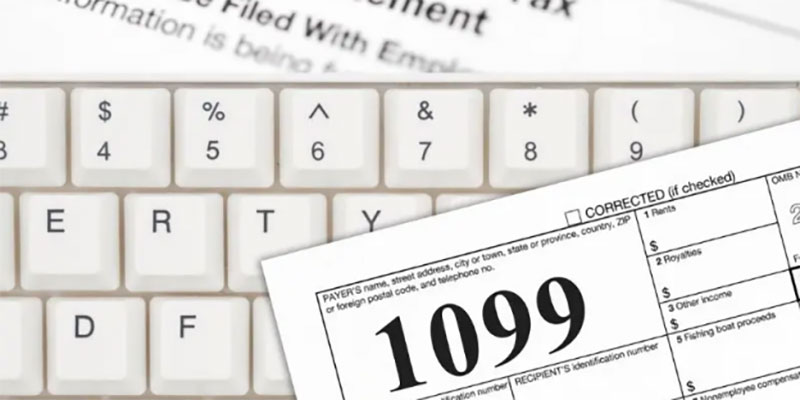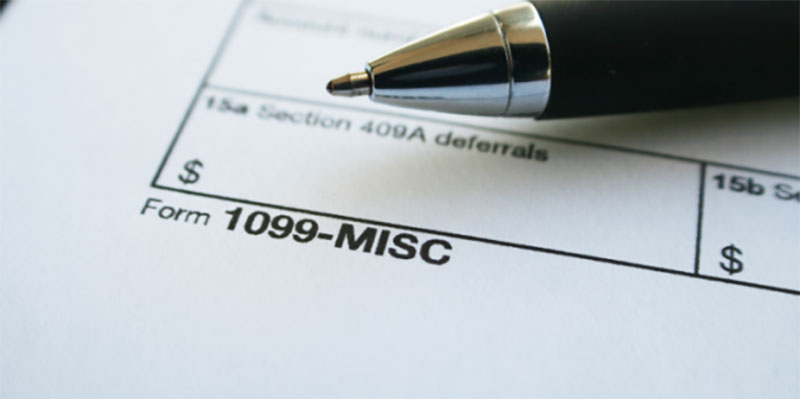Savings for 1099 Taxes
Dec 25, 2023 By Susan Kelly
Freelancer. A worker without a boss. Self-employed. Employed on a 1099 basis. An individual who earns money on the side. Workers not considered "regular employees" are referred to by various labels. When paying taxes, it makes no difference what title you give it.
First things first: when you're your boss, no one will take money out of your paycheck to give to the government in taxes. Instead, you must hand up your tax money to the government.
It all begins with paperwork, as it does with taxes generally. If you're self-employed, you won't be receiving a W-2 but rather a W-9. That way, your employer can show the IRS that it has paid all payroll taxes associated with your employment. Then, when tax time rolls around, you'll get a Form 1099 from each client, itemising the 1099 income you earned from that business over the year.1
How Much Taxes Do 1099 Employees Pay?

The Internal Revenue Service treats you as self-employed if you receive 1099 for your work. This means you will be responsible for paying self-employment and regular income taxes. The self-employment tax rate in 2022 is 15.3 per cent of the first $147,000 in net profits plus an additional 2.9 per cent of earnings above that amount. The tax rate itself comprises Medicare and Social Security contributions.
Your employer generally covers half of these taxes. However, you must cover all costs because you are a 1099 contractor, not an employee. If your annual self-employment or income tax liability is expected to be more than $1,000, you must make quarterly anticipated tax payments throughout the year rather than waiting until the end of the year to make your payment.
Savings for Taxes
You should start setting aside money for taxes as soon as you estimate how much you will owe. You can use an existing savings account to put away the money you anticipate needing to pay in taxes at the end of the quarter or year.
If you don't already have a savings account, you should consider getting one to store your tax and other long-term savings funds apart from your regular checking account funds. One of the many uses for a savings account is to set aside money for the Internal Revenue Service.
Hopefully, you'll find you've paid your taxes in April. If so, you can put the funds aside until you owe taxes. Money market accounts, and certificates of deposit (CDs) have higher interest rates than standard savings accounts but come with more stringent requirements.
Self-employment tax obligations are a common source of stress, but they need not be. The tax season is an excellent time to save money, get yourself in order, and perhaps give yourself a treat for all your hard work.
How Should I Set Aside Money To Pay Taxes?

Having determined how much of a monthly sum you'll need to set aside for 1099 taxes, the next step is establishing a strategy. You could start by opening a new bank account for your expected tax payments. That way, you can avoid spending any cash unintentionally.
You can reduce your 1099 tax bill in a few different ways. You can, for instance, put aside a certain percentage of each payment as it is received. Or, you can make a single, monthly, big deposit into your 1099 bank account.
It's natural to question why you can't make an estimated tax payment until the end of the year. For instance, a married couple might wish to hold off on filing their taxes until they know how much they would owe. You could, but it would be a risk. The Internal Revenue Service (IRS) requires you to make projected quarterly payments. Penalties may be assessed for persons who fail to make timely payments or who do not make adequate payments towards their tax obligations.
Under certain conditions, penalties for underpayment of estimated taxes can be waived. You need proof of the following to get out of paying the fine:
- After removing withholdings and credits, your tax liability is less than $1,000.
- You have paid either 90% or 100% of your tax bill for this year and last year, whichever is less.
You can submit your estimated tax payment electronically whenever it is convenient for you. You can set up an online taxpayer account with the IRS and arrange automatic payments from your bank account. Contact them to find out if your state's tax department accepts online payments for estimated state taxes.





